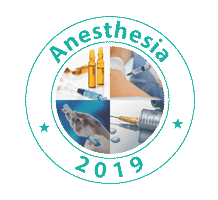Itee Chowdhury
Rajiv Gandhi Cancer Institute, New Delhi, India
Title: Pleth varibility index based intraoperative fluid management in head and neck free flap reconstructive surgeries
Biography
Biography: Itee Chowdhury
Abstract
Background: Head and neck reconstructive surgeries involving microvascular free tissue transfer (free flap) poses a major challenge in achieving a good cosmetic and functional outcome. Intraoperative fluid administration may be an important determining factor for a successful outcome. Static parameters like central venous pressure, mean arterial pressures, heart rate measurements for intraoperative fluid administration may not be reliable. Pleth varibility index (PVI) is a dynamic non invasive parameter for intraoperative fluid administration and can easily be obtained by pulse co-oximeter derived value. PVI enables goal directed tailor maid fluid administration preventing fluid overload thus preventing possible tissue oedema, thrombus formation and flap failure.
Purpose of this study: The purpose is to study PVI based goal directed fluid administration in these long duration specialized surgeries and compare the outcome with that of body mass index (BMI) based fluid therapy.
Methodology: A randomized prospective study on eighty patients of head and neck surgery involving free flap of four to five hour duration was conducted, one group of forty patients received fluid therapy based on body weight @ 6-8mL/ kg. Another study group of forty patients received intraoperative fluid therapy based on pulse oximetry derived PVI value ranging from 4-11. Data collected from mean arterial pressures, total crystalloid, colloids transfused urine output, thromboelastography parameters like R time, K time, alpha angle, maximum amplitude (MA) and LY3O and blood lactate levels in both groups. Results were analyzed and tested by appropriate statistical methods.
Findings: The PVI group data results showed significantly less total fluid administration, normal blood lactate levels and thromboelastography parameters within normal range compared to patients in group receiving intraoperative fluid based on body weight, which was statistically significant.
Conclusion & Significance: Pleth Variability Index may be a good alternative for goal directed intraoperative fluid management avoiding fluid overload which is non-invasive requiring minimum space in operating room. We also recommend routine thromboelastography in this group of patients at the end of surgical procedure as a guide to assess coagulation status. Adequate tissue perfusion and prevention of hypocoagulability and hypercoagulability in the study [PVI] group that may help in better microvascular free flap outcome.

